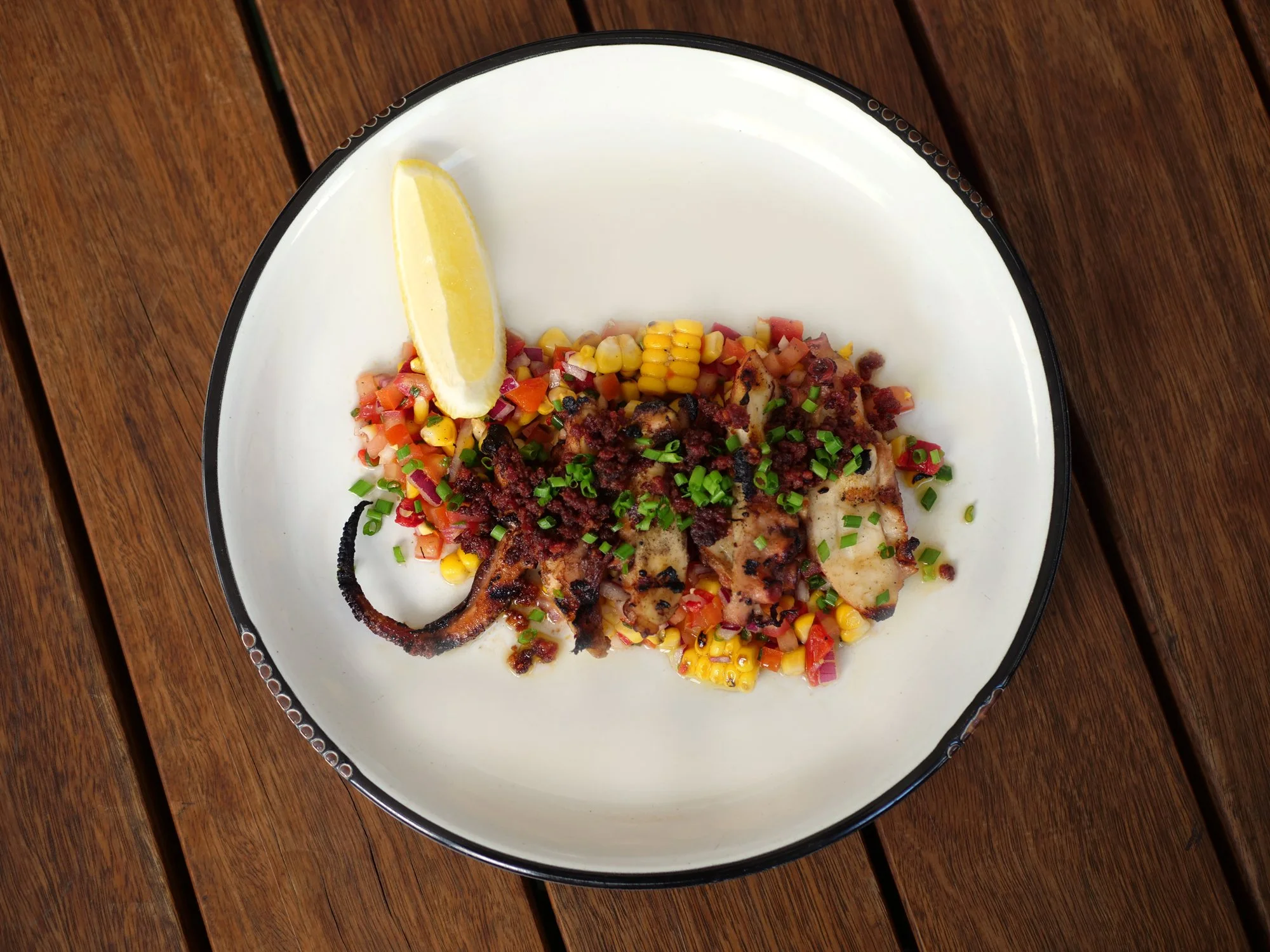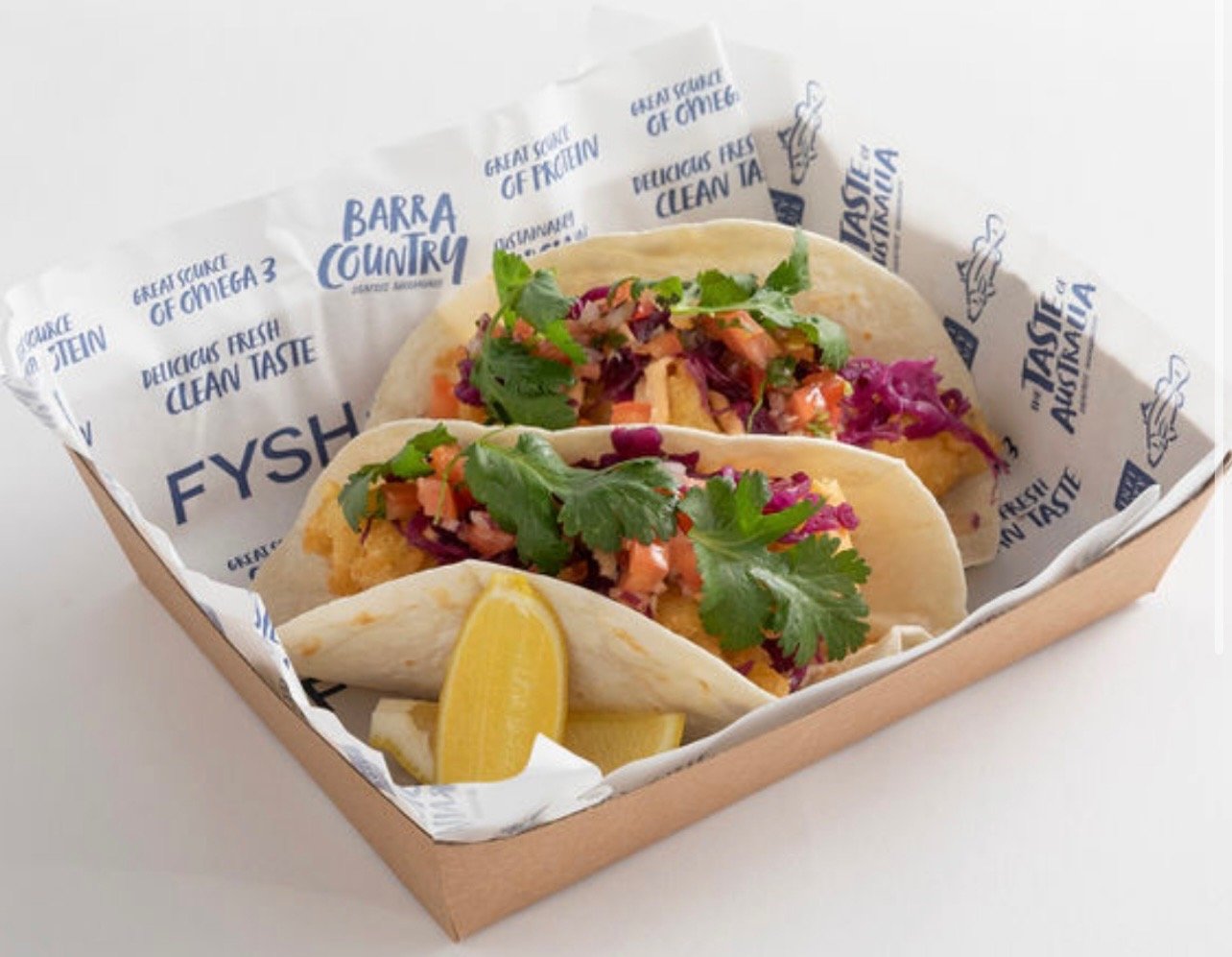Gluten friendly, sustainable, comfort eating: seafood stylings for winter
/Given the ongoing staff and skills shortage in foodservice, it’s no surprise that demand continues to boom for value added seafood – pre-cut, crumbed, frozen and ready to cook. At the same time, foodservice professionals are looking for products which they can easily serve to customers with particular dietary requirements – such as those seeking to avoid gluten.
It's for this reason that Simplot Australia has launched two new products under its I&J brand which are being marketed as ‘gluten friendly’: Crispy Battered Australian Hoki Bites and Battered Prawn Pops (these are 15g battered prawn balls in ‘popcorn’ style presentation).
Simplot Australia Head of Culinary APAC David White says, “These are the first seafood products we’ve produced with a gluten friendly formulation *. We know that there is a strong demand for gluten friendly products in the marketplace and ideally chefs and foodservice professionals are looking for products which they can serve to a broad range of customers – rather than having to stock a special product just for those customers wanting gluten friendly. Therefore, we’ve ensured that these new products have been formulated in such a way that there’s no compromise on flavour or presentation quality. Anyone can eat and enjoy them, and chefs can be confident to serve one product on the menu which also caters to people looking for gluten friendly.
“I’m not aware of any comparable products on the Australian market so I think we are leading the way in defining the new gluten friendly category as it applies to seafood”
David White
Simplot Head of Culinary APAC
Gluten friendly replacing gluten free on menus
‘Gluten friendly’ is a relatively recently coined term but one which is fast becoming commonplace on menus in place of ‘gluten free’. The reason is Australia’s highly stringent requirements for labelling food as gluten free – it must contain ‘no detectable gluten’, as judged by testing methods capable of detecting as little as 3-5 parts per million. This is in contrast to countries like the US, UK and EU whose regulations allow ‘gluten free’ labelled products to contain up to 20 parts per million of gluten.
I&J Hoki Bites
For the many food manufacturers which produce their gluten friendly products on production lines that also manufacture products containing gluten, the Australian standard is virtually impossible to reach. It’s also the case that if your foodservice establishment uses gluten-containing ingredients (wheat and its derivatives, barley, rye, triticale, malt, brewer’s yeast and wheat starch), you can’t effectively guarantee that any of your food is gluten free, due to the likelihood of cross-contamination from these ingredients being present in food preparation areas, as residue in deep fryers and toasters, and on cooking and serving utensils.
Hence the new term ‘gluten friendly’ which is designed to appeal to those customers seeking to reduce or avoid gluten in their diet without guaranteeing its complete absence. Those with medically diagnosed gluten intolerance (such as Coeliac disease), constituting a far smaller percentage of the population, tend to develop their own strategies to avoid it in their diet, such as preferring specialised menus and eateries.
“It’s fairly rare to be marketing gluten friendly seafood,” David says. “I’m not aware of any comparable products on the Australian market so I think we are leading the way in defining this new category as it applies to seafood.”
“Both these products tie into the trend of share platters, which allow your customers to order several sides and share them around”
In addition to their ‘gluten friendly’ tag, David adds the two new products have been developed with versatility in mind, which is key when it comes to value added: “Our job is to make life easier for the foodservice professional and that means providing solutions that not only save on prep time and labour but can be used across multiple applications – all of which enables them to run a more profitable business.
“The Hoki Bites are hand cut fillets that have been hand dipped in delicious gluten friendly batter to give a rustic, from-scratch appearance that you’d be proud to call your own. They come in 35g serves – designed to be small enough to serve as an individual bar snack or as part of a serving plate – but you can also put two or three together and you’ve got enough for a main serve.
I&J Battered Prawn Pops
“The Prawn Pops weigh in at 15g each which makes them ideal as finger food and for snacking, but you can also serve them as part of a share platter or a main. Both these products are designed to help with reducing the complexity of the menu – the old days of the six page menu are long gone, chefs are looking at more daily specials and smaller menus as a means of addressing the staff and skills shortages, and these products are designed to assist in that area. You can cut down on your costs and focus on serving up a smaller menu but doing it really well.
“Both these products tie into the trend of share platters, which allow your customers to order several sides and share them around,” David adds. “It almost seems nowadays that the sides have replaced the entrée, and that may have been driven by the popularity of Asian influenced cuisine where you have more of everything on the table as a banquet style presentation. Even local pubs now have half a dozen sides on the menu and it’s a great value add.
Both products have also been produced with sustainability in mind – the Hoki Bites are MSC certified (Marine Stewardship Council, a rating which applies to wild caught fish) and the Prawn Pops are ASC certified (Aquaculture Stewardship Council, which applies to farmed seafood).
Sustainability playing a bigger role on the menu
Sustainability is playing a bigger and bigger role on the menu, as Markus Werner, Corporate Executive Chef for Delaware North, confirms. “It’s not just seafood – we have a sustainability manager who looks after that side of the business, because there’s a growing awareness of the cost of waste, hence the need to move to a more sustainable focus.”
Markus’ efforts to source sustainable seafood recently led him to Mainstream Aquaculture, which operates a barramundi hatchery in the Victorian suburb of Werribee. “I live nearby so I went to visit – it’s a big operation using massive sheds, and they produce a fantastic product. They hatch the fish using natural ground water from the local area which is quite warm, and then they send the seedlings up to Innisfail and Port Douglas in Queensland where they go into salt water which improves the flavour and quality as they grow. If you do a per kilo comparison to a fish like tuna, barramundi is a far more sustainable product and it’s great to have on the menu because it’s so versatile – you can grill it, batter it and we use a lot for sashimi style presentation as well.
Fish Tacos - Fysh, Marvel StadIUM
“We use the product in our banqueting menu as well because it’s great quality and consistently sized making for easy portion control,” Markus adds. “We’ve also partnered with Mainstream to create our own Fysh brand for our food outlet at Marvel Stadium. We use fresh harvest barramundi from Port Douglas for our grilled fish, fish and chips, a poke bowl with a nice mix of raw and smoked barramundi, and even in fish tacos. It’s a really nice addition to our usual retail food offering to have a guaranteed fresh fish option – this is the first project we’ve done in this vein, but it’s probably the way of the future. Instead of just partnering with established retail brands, let’s partner with great products – because that’s what’s so important to a successful foodservice operation.”
Markus is also featuring local squid on the menu, freshly battered and served salt and pepper style. “We are also taking a look at the mussel farms in Port Arlington at the moment,” he adds. “I think it’s important for us all to go and see what’s out there – take a look at the practices these companies are using, and let’s celebrate good business and the commitment to sustainability.”
Seafood offers opportunities for waste minimisation
Consultant chef Gary Johnson says using seafood on the menu in the winter months presents great opportunities for waste minimisation. “Take for example a seafood chowder with some native herbs – when you’re portioning fish fillets, you can keep the offcuts to use in the chowder; if I’m peeling Moreton Bay Bugs I’ll keep the shells for the stock. A great seafood chowder can be a by-product of the other seafood dishes you might have on the menu and you can add the trimmings from your main course portions. Native ingredients like lemon myrtle, native thyme or saltbush all blend very well with seafood flavours.”
Grilled Octopus, Chorizo, Corn & Salsa
Some of Gary’s other winter seafood favourites include the aforementioned saltwater barramundi – “You can dress that up with a little miso glaze and serve it on a nice gushy broth with some winter greens. We have wonderful Fremantle octopus which you can braise to get it nice and tender, then chargrill with some smoked paprika oil, corn salsa and chorizo.
“Native ingredients like lemon myrtle, native thyme or saltbush all blend very well with seafood flavours”
He says the ideal seafood dishes in winter are those based around comfort foods like risotto. “A beautiful creamy risotto with spanner crab finished with mascarpone – you can add some crustacean oil from the shell around the outside with a little hint of chilli added, a wedge of lemon and some citrus zest. Or a whole squid marinated in fish sauce, palm sugar, a little chilli flake and some fresh lime which you fire roast. You can even use a char grill and when it comes out just cooked, cut it slightly and present it on a plate with fresh lime on the side and a sprinkle of coriander and it’s delicious!”
Seafood laksa is another perfect choice for the colder months – “it’s rich, it’s spicy, it’s an Asian classic and you have that beautiful rich, spicy coconut broth.”
Another popular drawcard is smoked fish pie. “If you don’t have smoked ocean trout or smoked salmon, you can use normal fish mornay style. Start with a little spinach on the bottom, then add your seafood, leaks, peas and a little celeriac and potato topping – sprinkle that with some tasty shredded cheese and bake it in the oven. A nice woody chardonnay is the perfect complement to a dish like that.
“I suppose the other serving style I like using for seafood in winter is Yakitori – take whatever you have to hand, whether it’s scallops, prawns or squid, or a firm-fleshed fish like swordfish or tuna, brush it with soy maple or miso honey glaze, then chargrill and serve on skewers with fresh lemon, Asian greens and oyster sauce on the side. That’s a truly mouthwatering way to serve beautiful fresh seafood at this time of year.”
* Gluten friendly - May be present: wheat, gluten. This product is formulated without gluten, however is made on a production line that also manufactures products containing gluten.









